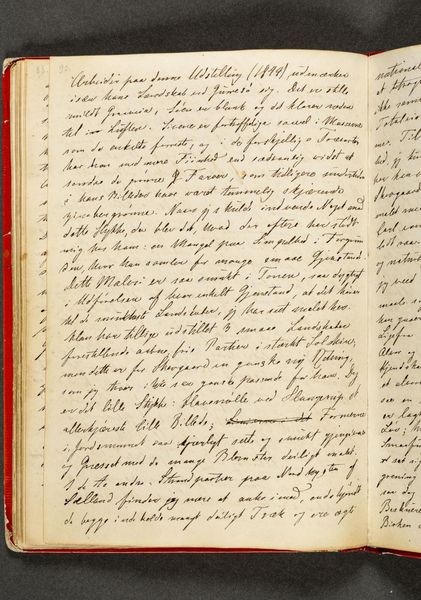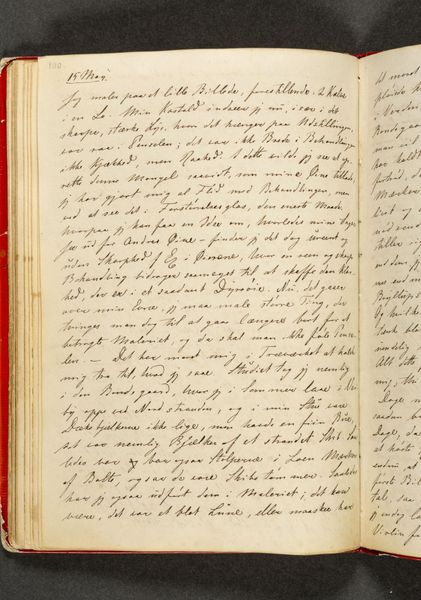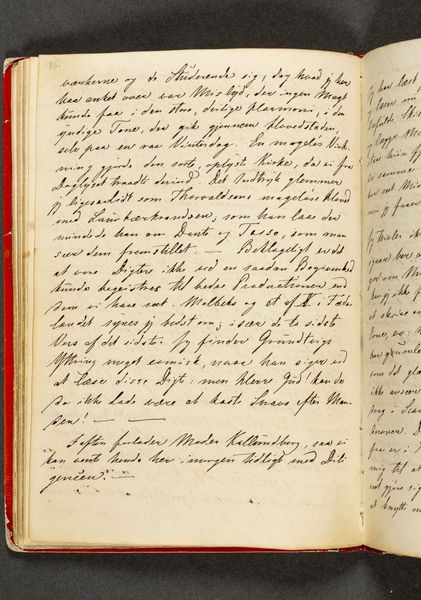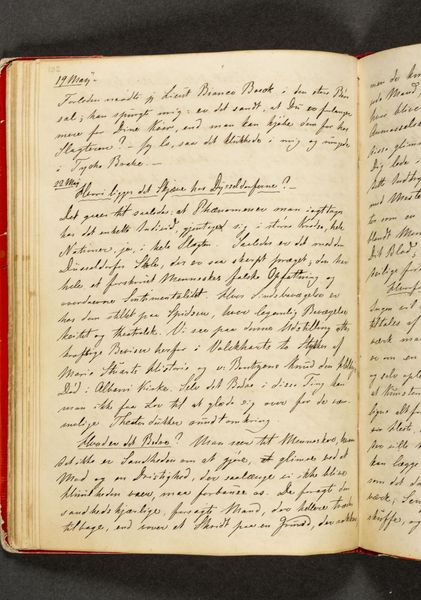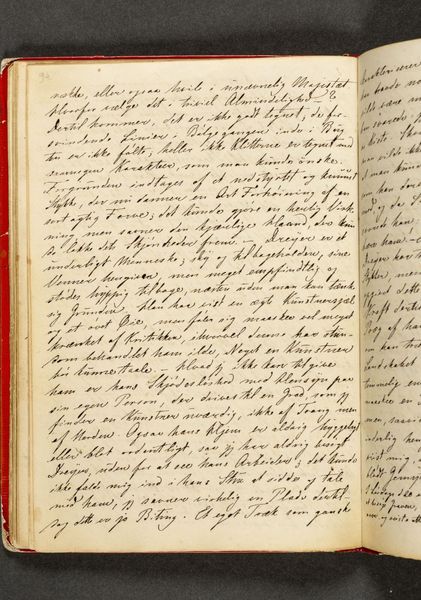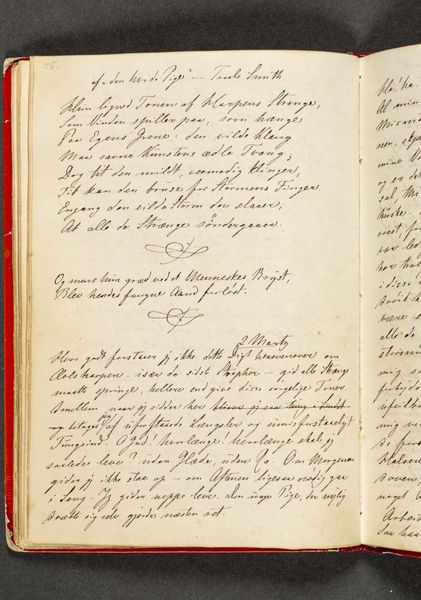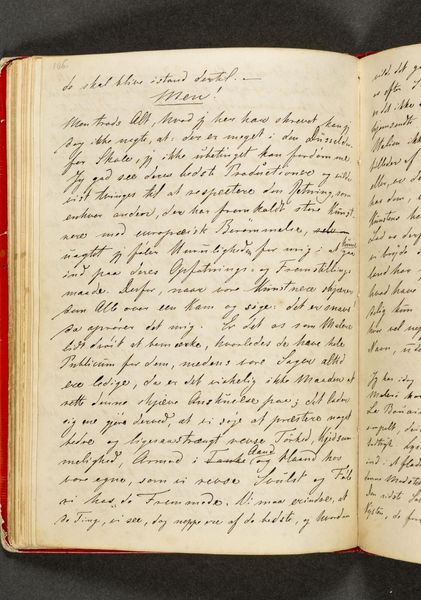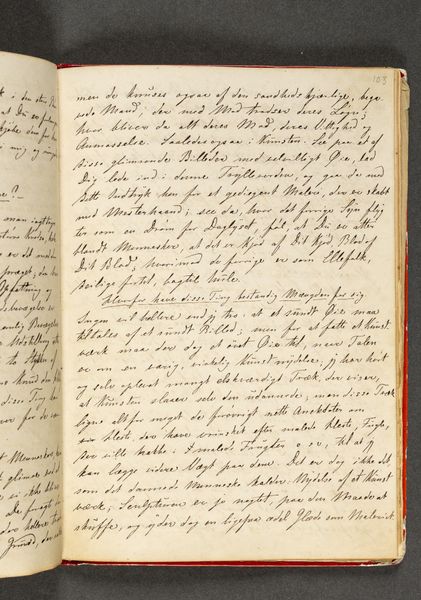
drawing, paper, ink
#
portrait
#
drawing
#
self-portrait
#
sketch book
#
paper
#
ink
#
journal
#
romanticism
Dimensions: 192 mm (height) x 133 mm (width) (bladmaal)
Editor: Here we have “Dagbog. Side 68,” or "Diary. Page 68" by Johan Thomas Lundbye, made in 1844 using ink on paper. It's basically a page from the artist's journal. I'm struck by the density of the writing, and how it feels very personal. How do you interpret this work within its historical context? Curator: Well, seen through the lens of social history, this isn't just a private diary entry. Consider the rise of Romanticism. Lundbye and his contemporaries were very interested in notions of self and subjective experience. What we might call "oversharing" today was, then, a crucial aspect of artistic expression. Are we really seeing private thoughts or is this carefully constructed for an audience? Editor: So, you’re suggesting the act of journaling, even seemingly intimate thoughts, could have been seen as performative in a way? Like he was consciously shaping his identity through these writings? Curator: Exactly! Think about the role of the artist in 19th-century Danish society. They were cultural figures, expected to contribute to a sense of national identity. Diaries became a medium not just for introspection but for crafting a public persona. And who gets to see the page displayed here in the museum? That fact affects the interpretation of this artwork. Editor: That makes so much sense. I initially just saw personal writing but now realize it’s entangled with cultural expectations and perhaps even a deliberate shaping of the artist's public image. Curator: It’s important to look beyond the surface, to question how societal forces shaped even the most seemingly intimate forms of expression. Now when you look at that page, what do you consider? Editor: It pushes me to question how "authentic" or unfiltered any artistic expression really is when it enters a public space like a museum. This insight has deepened my perception quite a bit. Curator: Mine, too! Analyzing an image that also contains text broadens its cultural significance in unexpected ways.
Comments
No comments
Be the first to comment and join the conversation on the ultimate creative platform.

